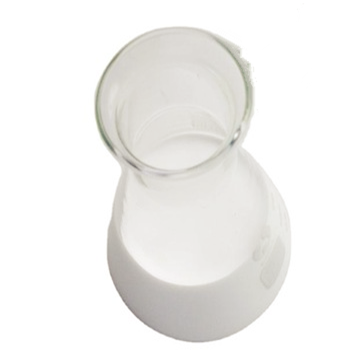Professional solutions on concrete addtives, Concrete Foaming Agent, Superplasticizer, CLC Blocks Additives, and foaming machine
(Using a Concrete Accelerator)
Using a concrete accelerator will help to speed up the setting time and cure time of the concrete. It also reduces the risk of frost damage to the concrete. Using a concrete accelerator is especially helpful if you are planning to place your concrete in the winter.
Calcium chloride
Adding calcium chloride to concrete is an effective way to reduce the setting time of the cement. This increases the rate of hydration of the cement and accelerates the hardening process. This is particularly beneficial when the temperature is below freezing. It also helps reduce the amount of water used.
Calcium chloride can also improve the strength of concrete that is air-entrained. This is particularly important because air-entrained concrete has very low tensile strength. Adding calcium chloride to the mix can also reduce bleeding. This means that the concrete will have a more uniform distribution of fibers.
However, it is also important to note that calcium chloride can reduce the strength of the concrete. Using a non-calcium chloride admixture is a better choice. This can reduce the likelihood of corrosion and the risk of injury to workers. It will also speed up the finishing process.
The action of calcium chloride on concrete is not understood completely. However, based on micromechanics and chemical effects, there are several theories.
The primary mechanical benefits of calcium chloride include increased early strength and compression strength. The amount of strength gain can vary from 30% to 100%. Using calcium chloride also improves the curing process. However, it is not expected to play a major role in strengthening concrete.
There are other factors to consider, too. For example, calcium chloride is not recommended when the temperature is above 70 degrees Fahrenheit. This may result in cracks and weaken the concrete. It is also possible that calcium chloride can deteriorate the reinforcing steel embedded in the concrete.
The use of calcium chloride is relatively easy and inexpensive. It can be used in solution form or as flakes. Calcium flakes are mixed in a bucket at the job site. It is then poured into the concrete mixer drum for a few minutes.
If you're using calcium chloride in your concrete, be sure to obtain approval from the American Concrete Institute (ACI). It can also be used in structural concrete, provided it meets the ACI durability requirements.
Calcium chloride is also considered to be the most effective concrete accelerator. It can also be found as a solution, which is mixed with the aggregate. The amount of calcium chloride added is relatively small. A dose of about 2 percent by weight of cement should be used.
Retarding admixtures
Increasing trend of high rise residential buildings and growing urbanization are key drivers of global admixtures for concrete market. Retarding admixtures are used to slow down the binding process of cement. These additives are used to increase the strength and workability of concrete, and to improve the durability and visual appeal of concrete. These admixtures are available in various forms and are used in various applications.
Retarding admixtures are available in the form of liquid set admixtures, which are mainly found in the salts of phosphates and lignosulfonates. These additives help reduce water in concrete and retard setting time. They are used in concrete for road construction and flooring.
Set retarders make up 2.1 percent of all admixtures sold in Norway in 2006. There has been a reduction in the use of set retarders from the mid-1990s to the early 2000s, while the consumption of concrete has remained flat.
Molasses has been used as a concrete retarder admixture for many years. It has shown a proportional effect on concrete properties, including setting time and strength. It has also been used to increase the setting time of high performance concrete.
It has been found that the presence of molasses as a retarder admixture can decrease the demand for chemical admixtures. Moreover, the usage of molasses as a concrete retarder admixture can contribute to environmental preservation.
Molasses is a type A retarder admixture, which means it can be used to increase the compressive strength of concrete. The percentage of molasses in the concrete mix increases with its usage. This increase in the percentage of molasses results in an increase in the slump.
Several concrete tests have been performed to examine the retarding capability of molasses. A study carried out in Germany showed that a dosage of 0.01 percent of molasses increased the compressive strength of concrete by 50 percent. The study also showed that a dosage of 0.05% of molasses satisfies the ASTM C 494 specification. Moreover, a dosage of 0.02 percent of molasses showed an improvement in the consistency of cement paste.
The effects of molasses on concrete are similar to those of other retarder admixtures. However, molasses has the advantage of being able to reduce water content of the concrete. It has also been shown to have a proportional effect on the setting time and slump of concrete.
Accelerating admixtures
Adding an accelerating admixture to a concrete mix before it is mixed can be an effective way to speed up the curing process. In addition, the admixture can reduce the initial heat of hydration and help the concrete to be in a hard state much sooner.
A variety of chemical substances can be used as concrete accelerators. Some common admixtures include carbonates, silicates, formates and organic compounds. Other admixtures include calcium chloride, nitrate, and thiocyanate.
Accelerating admixtures increase the rate of hydration of cement phases, thereby accelerating strength development. They are available in powder, liquid and slurry form. Accelerating admixtures also offer high flexibility in controlling the early hydration of cement phases. In addition to reducing the initial heat of hydration and speeding up the setting of concrete, accelerating admixtures can also be used to prevent thermal cracking in concrete.
The most common accelerator is calcium chloride. However, the use of calcium chloride is restricted in most concrete specifications. Calcium chloride can cause corrosion on steel reinforcement and can even lead to cracking on cured concrete surfaces. In addition, it should be used at only 2% of the cement weight. It should also not be used as an anti-freeze.
Calcium formate was also found to be effective as an accelerating admixture. It was found that a lower amount of calcium chloride was required to accelerate the setting of concrete.
Some other nonchloride accelerators include triethanolamine, sodium thiocyanate and alkanolamines. These are often used in decorative concrete applications.
Calcium chloride was the first accelerating admixture used. However, due to corrosion hazards, it is no longer a common admixture. In addition, excessive use of calcium chloride can lead to rapid stiffening of the concrete.
Other types of accelerators include alkali-free shotcrete accelerators based on aluminum sulphate. These admixtures are often combined with diethanolamine.
Accelerating admixtures are a cost-effective way to accelerate strength development in concrete. They can be added to a concrete mix before it is mixed, and can also be used during the mixing process. The increase in strength can ensure that the concrete will be ready for placement faster.
Dosing
Adding accelerators to concrete helps to accelerate the setting time and improves early strength. They are custom blends of different chemicals and raw materials. Some accelerators have accelerating properties, while others improve corrosion resistance and workability.
The most common concrete accelerator is calcium chloride. However, this chemical has a few drawbacks. It can corrode steel reinforcement, reduce durability, and can also contribute to aesthetic damage. It is therefore recommended to use it at the right dosage.
Non-chloride accelerators are also used. These types are more flexible in dosage. They may be supplied in liquid form or granules. They can also be a safer alternative to calcium chloride. They can be incorporated into concrete in manufacturer-specified ratios.
Calcium nitrate and sodium thiocyanate are other non-chloride accelerators. They are dissolved in water and may be used in a range of doses from 5 to 20 liters per cubic meter of concrete.
Calcium formate, on the other hand, is a white powder that acts quickly to increase the rate of hydration in a mix. It can be used at a variety of dosages to achieve the desired setting time. It also does not have the corrosion problem of calcium chloride. It is also relatively easy to handle. It is not regulated by the International Maritime Dangerous Goods Code.
Another non-chloride accelerator is triethanolamine. It is also dissolved in water and is available in liquid solutions. It can be used in a range of dosages from 5 to 20 liters per cube.
Depending on the type of job, combinations of different accelerators may be used. They also vary with the properties of the other ingredients in concrete.
NitCal is a mixture of purified nitrate salts. It is not regulated by the International Marine Dangerous Goods Code, but it is relatively safe to handle. NitCal is also available as granules. These are easy to use and offer a wide range of advantages over other concrete accelerators.
DARASET(r) 400 is a non-chloride concrete accelerator that can be used in a variety of applications. It helps to reduce setting time, increase early compressive and flexural strength, and offset retarding effects of pozzolans. DARASET(r) 400 provides similar results to calcium chloride, but with the advantages of no corrosion and a shorter setting time.
Concrete additives Supplier
TRUNNANO is a reliable concrete additives supplier with over 12-year experience in nano-building energy conservation and nanotechnology development.
If you are looking for high-quality concrete additives, please feel free to contact us and send an inquiry. (sales@cabr-concrete.com)
We accept payment via Credit Card, T/T, West Union, and Paypal. TRUNNANO will ship the goods to customers overseas through FedEx, DHL, by air, or by sea.
(Using a Concrete Accelerator)








